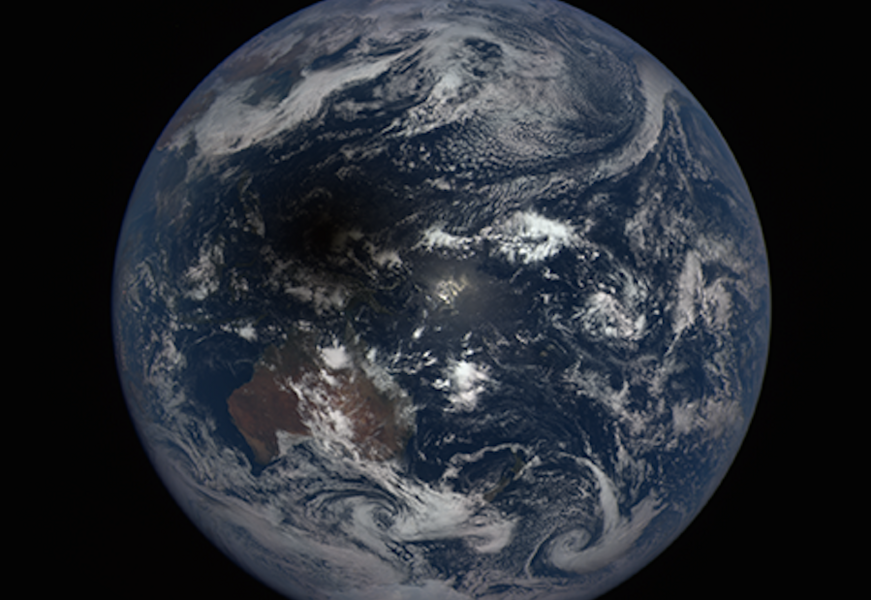NASA captures astounding solar eclipse from all angles
Loading...
A dark shadow over Earth is seen in new NASA images taken during a solar eclipse.
NASA released a set of new images that offer earthbound observers a glimpse of Wednesday's solar spectacle from another angle. A satellite pointed its cameras at Earth to document the effect on the surface as the moon slowly blocked the sun. The images add to an extensive collection of documentation on the stellar event.
The only total solar eclipse of 2016 was visible from Southeast Asia, but NASA has published a broad range of materials for virtual and online viewing. From a live broadcast, which showed the eclipse in real time, to satellite imagery, the space agency had its ubiquitous astronomical camera skills on full display.
“What is unique for us is that being near the Sun-Earth line, we follow the complete passage of the lunar shadow from one edge of the Earth to the other,” said Adam Szabo, NASA’s project scientist for DSCOVR, in a NASA press release. “A geosynchronous satellite would have to be lucky to have the middle of an eclipse at noon local time for it.”
The most recent set of images released were taken about 1 million miles away. The Deep Space Climate Observatory (DSCOVR) is the only satellite that operates in deep space between Earth and the sun. It maintains a constant view of the sun-lit side of the planet and acts as an early warning system for Earth when solar flares are active.
NASA used other satellites to document the stellar event from a closer distance.
NASA’s Suomi-NPP satellite is equipped with monitoring devices to record key data about the climate of the planet. It orbits roughly 14 times per day and was able to capture an image of the shadow over the western Pacific Ocean. NASA’s Aqua satellite was also able to capture images of the event in closer detail above the Pacific Ocean.
From the ground, NASA conducted a live broadcast of the solar eclipse. The video was broadcast in partnership with the Exploratorium Science Center and the National Science Foundation from Micronesia. The clip displays the totality period of the eclipse, from 8:38 to 8:42 p.m. Eastern time on March 8, when the moon completely blocked the sun, according to NASA.
This eclipse was the last and only chance to see a total solar eclipse this year, but other partial eclipses will be visible. Later in March, a penumbral lunar eclipse, where the moon is partially eclipsed, will be visible in most of North America, Asia, Australia, and parts of South America. On Sept. 1, an “annular eclipse,” where most of the sun is blocked by the moon, will be visible for observers in parts of Africa.
The next total solar eclipse will be on Aug. 21, 2017. Already known as the “Great American Eclipse,” it will be visible across the United States, following a pattern that will take from Oregon to the southeast United States.






